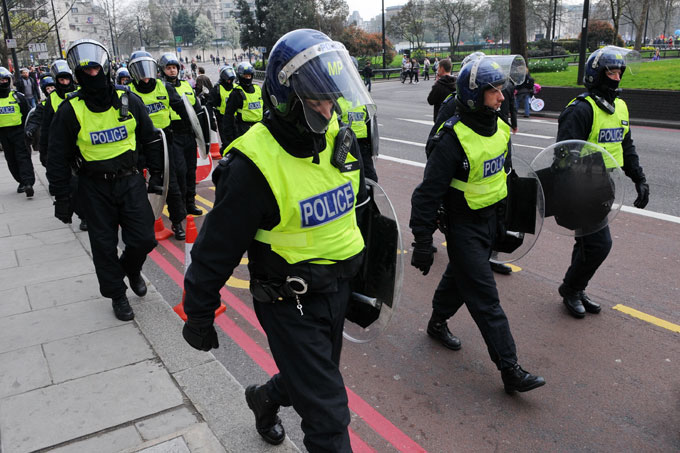Paul Swallow looks at how France have developed their standing armies for dealing with riots, and asks if it’s possible for the UK to do the same.
Following the riots in the UK early August 2024, which surprised many by their violence and which challenged police forces, Sir Kier Starmer’s proposals for a ‘standing army’ of riot-trained police officers is interesting. However, given the regionalised nature of the UK’s police, with 43 distinct and autonomous police services, the absence of a national police force and the independent roles of Chief Constables and Police and Crime Commissioners, it is difficult to imagine how this would be obtained.
Other countries, such as France, with two national police forces, the civilian National Police (PN), who work in large towns and cities, and the military National Gendarmerie (GN), who police smaller towns and the countryside, have established standing armies for dealing with riots. In France there are two: the PN’s ‘Compagnies républicaines de sécurité’, (Republican Security Companies) (CRS), set up in 1947 by the then President, General de Gaulle, to counter what he saw as a threat from communist activists. The GN’s version of the CRS is the ‘Gendarmerie mobile’ (Mobile Gendarmerie) (GM).
Both the GM and the CRS have about 10,000 – 12,000 personnel and are based in barracks-style accommodation dispersed throughout France, living with their families. They are composed of self-contained operational units with their own material and transport and can be mobilised quickly and deployed anywhere in France under the orders of the local Préfet (the politically appointed Head of France’s départements, the equivalent of British counties).
Interestingly, neither ‘army’ has a judicial role. Their task is to deal with riots, and not to arrest the rioters. If needed, they can be used as witnesses in court, but other police agencies with a judicial role would conduct investigations and arrest and charge offenders.
The focus on purely quelling riots has led to both forces having a reptation for violence, especially the CRS whose presence at riots regularly provokes chants of ‘CRS – SS’. When not engaged in crowd control, both the CRS and the GM undertake non-territorial policing tasks, such as patrolling motorways, supporting local forces and acting as lifeguards or mountain rescue teams.
The reason that the British police will not replicate this is that in France, with its two national police forces and two national heads reporting directly to the Interior minister, such forces are arguably easier to set up. In the UK, the roles of Chief Constables and Police and Crime Commissioners would have to be considered.
France has about twice the number of police officers and Gendarmes per head of population compared to the UK, and therefore probably has resources to spare. Moreover, there is a long tradition of demonstrating in France, which is not the case in the UK. Moreover, the abstraction of such a large number, perhaps 10,000 officers from around the country would impact front-line policing, and there is always the important question of how these officers would be deployed when there were no riots.
A Home Office spokesman later said that Starmer’s standing army would be “an enhanced version of mutual aid”. Although no specific details were given, this does imply that an investment in training, resources and perhaps greater central control might be forthcoming. Whatever emerges, it is unlikely to be like the standing army seen in France.
Paul Swallow, Senior Lecturer in International Policing and Counter Terrorism, in the School of Law, Policing and Social Sciences.
 Expert comment
Expert comment Jeanette Earl
Jeanette Earl 2358
2358


